How are you doing? I’m doing pretty well. How are you? I’m doing good.
For the past year, Google’s Smart Reply feature has let you respond to any email by tapping on one of three replies generated by the company’s artificial intelligence. The idea was that canned replies like “Sounds great!” and “Great, thanks!” could be useful for those rapid response email situations where spending even a minute crafting a reply was a minute too long.
This week, Google launched a new feature called Smart Compose that takes its AI writing much further. Smart Compose works a lot like Google’s own Autocomplete does in Search, popping up the things you might be about to say next. Simply by hitting tab, you can accept Google’s proposed words, add them to your copy, and move on to the next line of your email . . . for which Google might have even more suggestions.
My colleagues and I spent about an hour playing around with the service. Here’s what we learned.
GOOGLE IS VERY GOOD AT SAYING “HI”
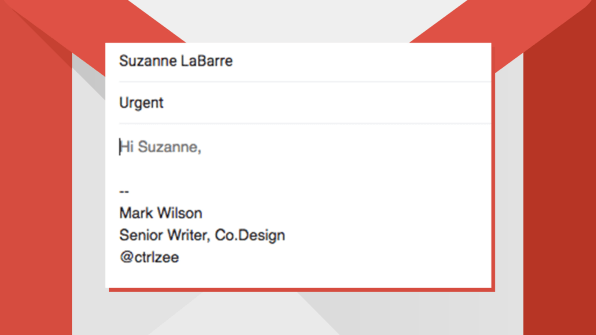
Hey? Nope. Hello? Not a chance. Google isn’t into those greetings at all. But it is very good at suggesting “Hi, [first name of whomever you’re emailing].” It’s also clever enough to pull multiple first names in your email’s “To” field, so you can say hello to multiple people at once.
GOOGLE IS READY TO SCHEDULE . . . PERHAPS TO A FAULT
Much of the time, Google has very few suggestions at all. Only a word here or there, it’s really quite quiet. That is, until you get down to scheduling. Boy, is Google ready to help you schedule. It’s not smart enough to cross-reference your calendar to suggest open times, but it will readily suggest a call for every time, day, or month, so long as your fingers play along.
GOOGLE IS SUPERB AT MEANINGLESS CONVERSATIONS
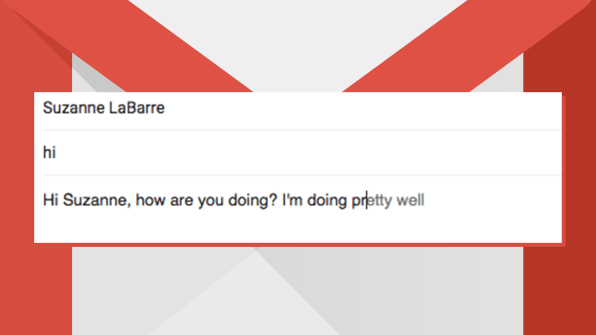
How are you doing? I’m doing pretty well. How are you? I’m doing good. Google can make elevator conversation for hours. In fact, it seems completely optimized for the insincere filler that makes up about 20% of all emails to people who you’d probably rather not be emailing in the first place.
GOOGLE DOESN’T SEEM INTERESTED IN HELPING ON SERIOUS TOPICS

I attempted to bait Google with emails on “urgent” topics, dead pets, and even the subject of a raise. However, Google seems to go quiet when a sentence contains real stakes of any kind, even when autocomplete syntax seems relatively obvious to a topic. In other words, if you want to chat with your boss or loved one about something serious, you’re going to have to do it all by yourself.
GOOGLE IS STILL UNINTENTIONALLY FUNNY
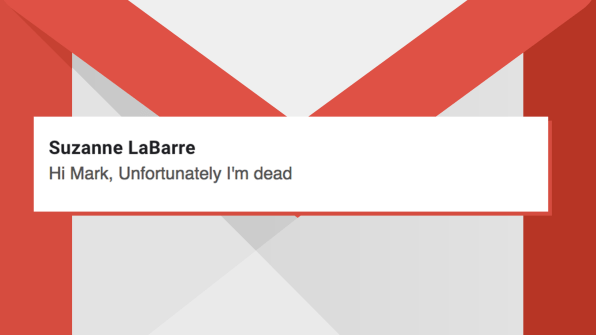
When my boss wrote me that unfortunately, she was dead, Google’s suggested response was so perfectly tone deaf.
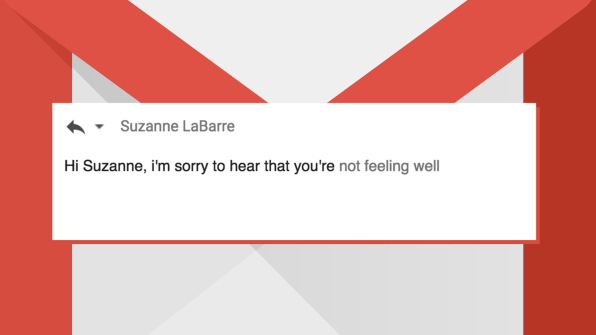
Also, typos on your part can make some pretty funny mad libs happen, too.
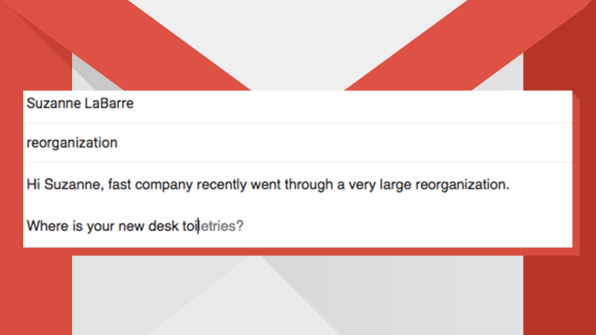
Right out of the gate, Smart Compose feels more conservative than what we might have imagined. The tool will definitely not be penning your emails for you, nor will it speak up in those moments when you’re choosing your words wisely. But it will save you from typing pleasantries now and again.
From the outside, this design seems incredibly intentional on Google’s part. It’s likely intended to make sure the feature is not overstepping its bounds with offensive, or just hilarious, suggestions. Perhaps Google is simply learning more about email before it turns the AI’s nobs up to 11. But I can’t help but wonder if by suggesting so many useless interpersonal platitudes in the meantime, Smart Compose isreinforcing some statistical average of our worst email impulses, rather than guiding us to what we really need: better, faster, more earnest communication that makes sending that note worthwhile in the first place.
As a first step, maybe that’s as simple as Google becoming more personalized to my own pattern of speaking rather than pushing me toward an average. Maybe that means recognizing that I prefer to type “tyty” to say “thanks,” or a “hahahahaha” as opposed to the standard “lol.” Into the future, I’d love Gmail to act like the editors I have right here at Fast Company, suggesting smoother phrases and better verbs to make me look like a better writer than I really am–especially for the most complicated emails that I’m nervous to write in the first place.
If you’d like to try Smart Compose for yourself, go to Gmail, check the gear icon on the upper right, and turn on “experiments” under the “general” tab. Smart Compose should activate automatically after that.
–
This article first appeared in www.fastcodesign.com
Seeking to build and grow your brand using the force of consumer insight, strategic foresight, creative disruption and technology prowess? Talk to us at +9714 3867728 or mail: info@groupisd.com or visit www.groupisd.com




